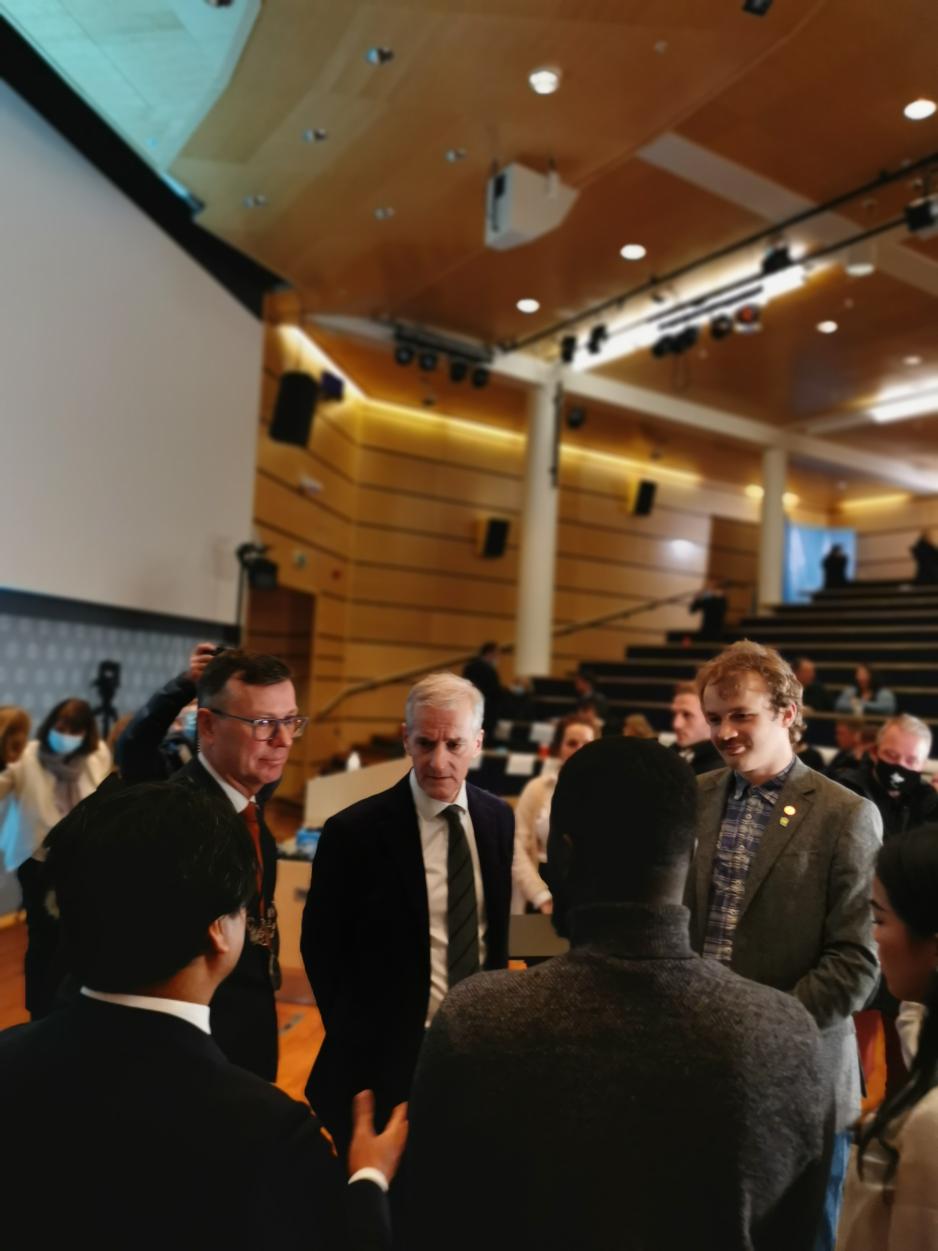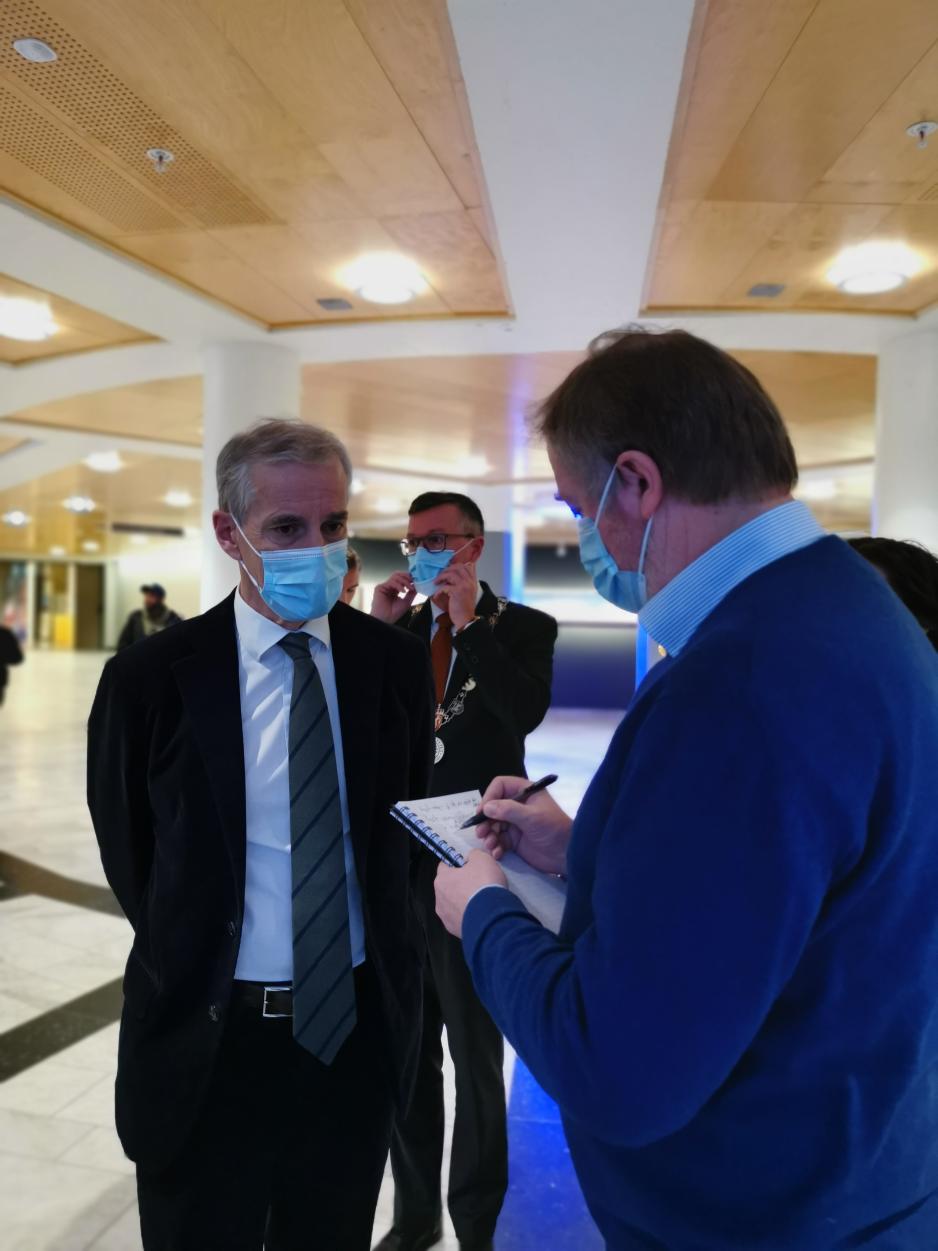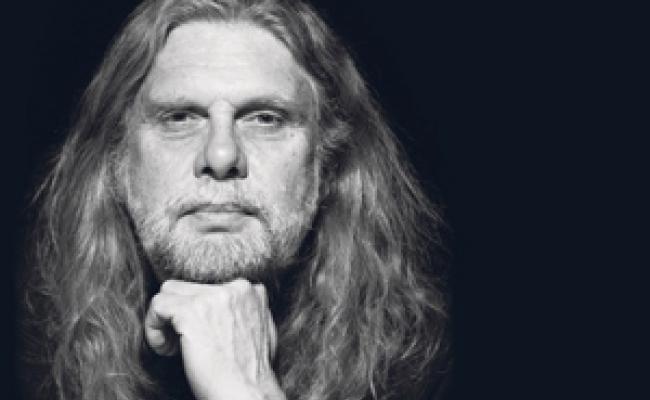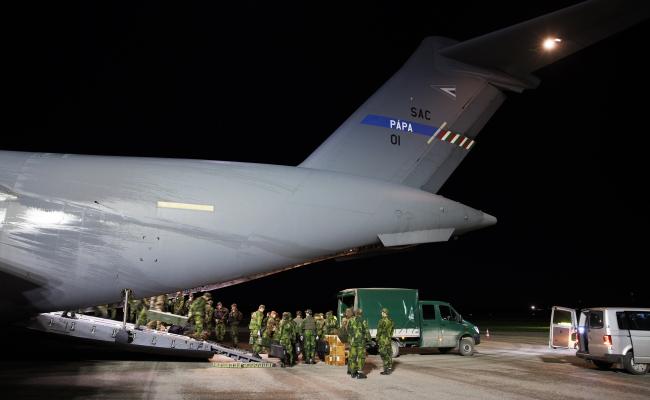Norwegian PM Jonas Gahr Støre: We Cannot Leave an Empty Void on the Border to Russia and the Arctic
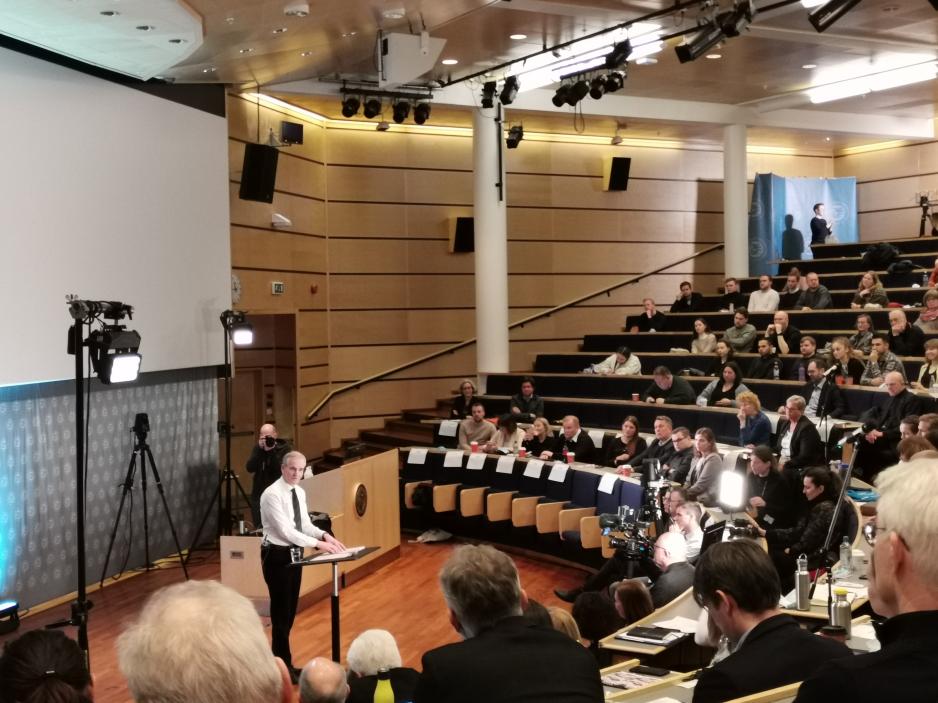
Norwegian Prime Minister Jonas Gahr Støre (Labor) drew up the lines of the new Norwegian government’s High North policy in his speech at the University of Tromsø last Thursday. (Photo: Astri Edvardsen)
A continuing drop in population figures for the North is a major security policy challenge, said Prime Minister Jonas Gahr Støre (Labor) in his High North speech in Tromsø, Norway last Thursday.
Tromsø, Norway, Thursday 3 February. This is the day for Jonas Gahr Støre’s first High North speech as a prime minister.
Støre speaks at the University of Tromsø, the place where he as recently appointed foreign minister gave his first High North speech in 2005, announcing the then-government’s major High North policy initiative.
In his speech today, the PM stresses one of the goals for his government’s new boost to the High North policy: Turning the negative population figure development around. Støre also depicts the dwindling population figure and reversing it within an overall frame of an ongoing national security policy challenge.
High North News met with the prime minister after his speech.
Investing in business and people
Much is being invested in the military in the High North, yet population figures dwindle week by week. Does the government have any concrete plans for investments in order to secure a robust civil society and business in Northern Norway?
“Yes, we will invest in business, welfare and infrastructure politics in the North. However, we should also respect the complexity in all this. There is no single budget post that will turn population figures around”, Støre says and expands:
“It turned around last time we were in government. The reasons why changes in population patterns occur are very complex. Back then, there were initiatives and optimism in the North, which in turn triggered investments and more presence. We must manage to get such a development again; for there to be optimism and participation in exploring the new opportunities in industry and work.”
In his High North speech, the PM pointed to a large space of opportunities within a.o. green industries, digitalization and health services near where people live, as well as de-centralized education opportunities.
Will this be tied together within a northern framework?
“Yes, it must be tied together. We must focus on the High North both when we now work out a new whitepaper on district policies, but also when discussing the individual departments’ initiatives. The government has already started this work”, he replies.
We cannot decide where people are to live or that they cannot move away.
National challenge
The PM in his speech refers to the ongoing out-migration from Northern Norway, in particular Finnmark, on the border to Russia, as “a serious warning”.
Støre’s preliminary talking points for halting and reversing the out-migration from the North may appear somewhat airy. Finishing whitepapers also takes time.
In his commentary last Friday, High North News Editor-in-Chief Arne O. Holm wrote that the PM’s main challenge is that his ambitions come in the wake of an increasing drop in population figures as well as an escalation of the security policy confrontation between Norway as a NATO member state, and its neighbor Russia.
When asked what the government’s strategy is to maintain population figures in the High North and what concrete measures the government will take in a short and medium time perspective, the PM first refers back to ongoing work with the district whitepaper, which is led by Minister of Local Government and Regional Development Bjørn Arild Gram (Center Party).
“It will focus on these issues”, Støre says and then continues his reasoning:
“In Norway, we have out-migration challenges in parts of the country, amongst others in the High North. We also have in-migration challenges in towns where for instance the housing market is under pressure. We must see this within the same context. And, like I said in my speech, we cannot decide where people should live, or decide that they may not move.”
“At the same time, it is obvious that the strong population drop in Finnmark represents a challenge to more than Finnmark. It also represents a national challenge. We cannot leave an empty void on the border to Russia and the Arctic”, he stresses.
Will there be extra powerful measures taken, then?
“Yes, that is what we are discussing now. We have started working on the districts whitepaper. If this is the policy we want, we also have to chose some political tools that allow us to do something about it.”
Tense atmosphere
The current tense security situation in Europe also featured prominently in the PM’s High North speech. Cold winters do not come from the north, they blow towards us, he pointed out.
The situation is characterized by a large Russian military build-up on the border to Ukraine and an overlapping, overall security policy conflict between Russia and NATO/the West.
You said in your speech that it is important to keep the neighborly conversation going. What contact have you had with Russia recently?
“I met with the Russian foreign minister early on in my term in office. He had attended meetings here up north and then flew via Oslo and met with me. We have known each other for a long time, and had a good conversation. Following on from that, I have not been directly in touch with Russia while being a PM. I was at the UN headquarters last week, and spoke with Russian UN diplomats”, Støre says.
Continuing, he points out that Norwegian authorities are in touch with their Russian counterparts, amongst others in relation to Cold Response 2022, the major military exercise coming up soon in Norway.
“When we are to host a major NATO exercise, we have informed Russia about it in the usual way and then some, in that the Chief of our northern defense forces has spoken with representatives from the Northern Fleet to inform about the exercise in the way we usually do.”
The alliance stands united when it comes to what we think about the military buildup taking place in Europe today.
“Conflict issues along diplomatic tracks”
In the continuation of Norway’s maneuvering as a NATO member and neighboring on Soviet-Russia during the Cold War, there is the question of what Norway plays into the alliance now, as there is an entrenched security front between Russia and NATO.
To what extent is Norway, as NATO in the High North, a voice for the alliance to relax the situation towards Russia in the current situation, where the parties conduct increasingly militarization in each other’s border areas?
“The alliance is most unified when it comes to what we believe about the military build-up taking place in Europe today. We are also unified in our desire for any outstanding issues remaining between countries in Europe to be solved politically. They should be pursued along political tracks.”
“The fact that the USA and Russia speak with each other, that NATO and Russia speak with each other, that we use the Organization for Security and Cooperation in Europe (OSCE) and other contacts, is the way to do this. Not coming with military threats.”
Close monitoring in the North
At his Christmas press conference, which was mainly focused on the Covid-19 pandemic, the PM wrapped up by talking about the possibility of new war and confrontation in Europe in light of the grave security situation.
Before Christmas, you warned the Norwegian people about the potential for war in Europe and said that the government is focused on securing Norway in a very tense security situation. What does the government do to prepare civilians in the High North of a potential war?
“I have not spoken about a potential war in Norway. But there is a large military build-up in and around Ukraine, and there is a threat about a potential invasion. We have now knowledge of facing this where we are now. We will monitor the situation closely and we do that in Norway”, Støre says and adds:
“Like I like to say, Norway is NATO’s eyes and ears in the North. As of now, we do not have any information that should worry people when it comes tot his. The Armed Forces pay close attention. They take responsibility and I also monitor the situation closely now.”
What is your message to those living along the border to Russia, who experience military mobilization up close, for instance in the form of exercises?
“Well, there is not any intense exercise pattern close to our border. The moving of resources takes place at sea, vessels sail south and so on. This is something Norway always pays close attention to”, the PM points out and continues:
“One of the themes I have focused on today is that it is important for people to live in Finnmark. For us to live in the North, to live normal lives here, and that we also have a desire to have and pay attention to people-to-people cooperation. That is natural, but also difficult in a tense situation like the current. At the same time, this is what we should aim for.”
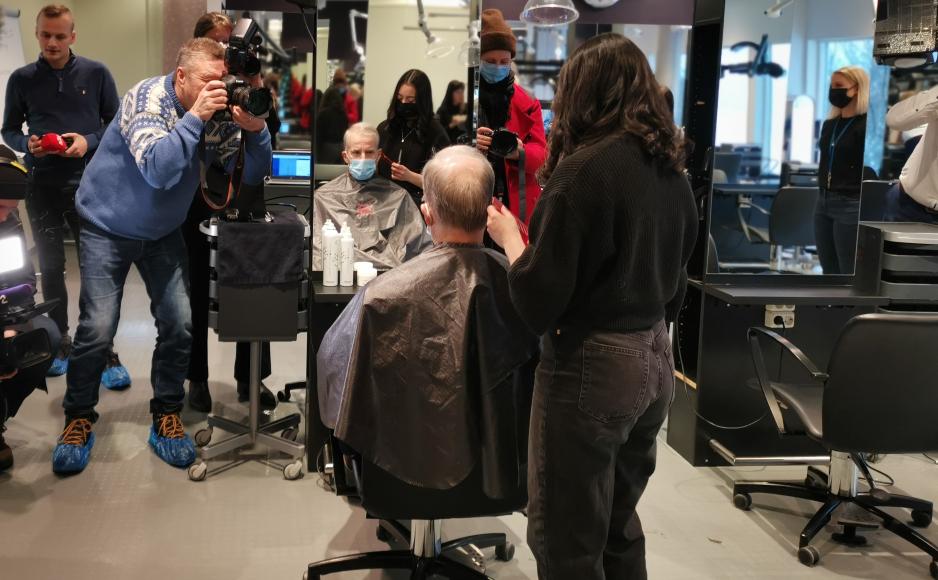
PM Jonas Gahr Støre (Labor) got a free haircut from trainee Emma Øseth-Pettersen (17) when visiting Breivang upper high school, which hosts a wide range of creative profession programs.
Threats against “our heads”
In his High North speech, the PM also spoke about hybrid threats, amongst others against digital infrastructure and “against our heads”
What specifically do you mean with this potential threat to “our heads”?
“This is something we read about in many contexts related to journalism, media, and what is online. In other countries, we have seen conspiracy theories and, with that, “fake news”. It is important to think through and be critical to what we hear”, Støre argues and expands:
“We know that there are countries that are actively out to affect the formation of opinions through various kinds of campaigns. It may seem like this is something happening other places rather than here, however, I believe that is wrong. Each and every one of us must sharpen our senses and think through what we are exposed to and what information we receive.”
Are you, then, thinking more of this in a general context and not specifically in the currently tense security situation?
“Yes, however, we live right here and now, after all! I believe this kind of threats, which are often referred to as hybrid threats, often are about intense attempts at affecting our opinions – and we must monitor to that.”
Also read
This article was originally published in Norwegian and has been translated by HNN's Elisabeth Bergquist.


